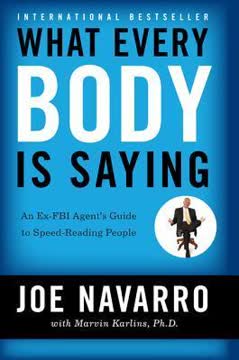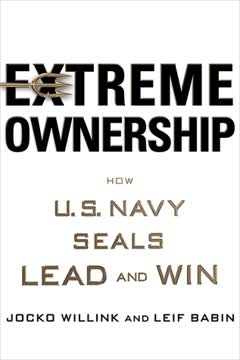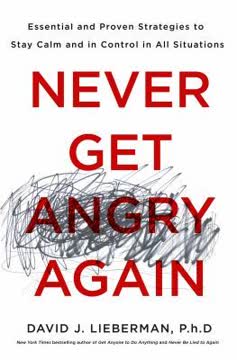نکات کلیدی
1. شناسایی نشانههای فریب در زبان بدن و الگوهای گفتاری
"کسی که چشمی برای دیدن و گوشی برای شنیدن دارد، میتواند خود را قانع کند که هیچ انسانی نمیتواند رازی را نگه دارد. اگر لبهایش خاموش باشند، با نوک انگشتانش صحبت میکند؛ خیانت از هر منفذی از او تراوش میکند."
نشانههای زبان بدن: به محدودیت در ابراز احساسات، حرکات سفت و دستهایی که دهان یا صورت را میپوشانند، توجه کنید. دروغگویان معمولاً کمتر از خود انیمیشن نشان میدهند، دستانشان را نزدیک به بدن نگه میدارند و تماس چشمی کمی برقرار میکنند.
نشانههای الگوهای گفتاری: به تغییرات در تن صدا، سرعت گفتار و مکثهای غیرعادی توجه کنید. افراد فریبکار ممکن است با صدای آرامتر صحبت کنند، زیر لب بگویند یا از لحن یکنواخت استفاده کنند. آنها همچنین ممکن است:
- از عباراتی مانند "راستش" یا "چرا باید به تو دروغ بگویم؟" استفاده کنند
- از استفاده از ضمایر شخصی مانند "من" یا "ما" اجتناب کنند
- پاسخهای بیش از حد جزئی یا به نظر تمرین شده ارائه دهند
- به سرعت دفاعی شوند یا موضوع را تغییر دهند
2. تسلط بر هنر پرسشگری استراتژیک برای کشف حقایق پنهان
"ما اغلب به طور کور به جنگ کلامی میرویم."
آمادهسازی رویکرد: قبل از مواجهه با کسی، یک برنامهریزی با توالیهای از پیش نوشته شده تهیه کنید. از این استراتژیهای کلیدی استفاده کنید:
- با سوالات غیر اتهامی شروع کنید تا آسیبپذیری فرد را بسنجید
- با پرسشهای مستقیمتر بر اساس پاسخهای اولیه آنها ادامه دهید
- از سکوت و نشانههای ساده مانند "واقعاً؟" برای تشویق به توضیح بیشتر استفاده کنید
تکنیکهای پرسشگری تاکتیکی:
- هدایت و محدود کردن: سوالاتی بپرسید که پاسخها را به چیزی مثبت محدود کند
- تحریف زمان: درباره رویدادهای گذشته به گونهای صحبت کنید که گویی قبلاً شناخته شدهاند
- فرض مستقیم: ابراز ناراحتی یا ناامیدی کنید تا اعتراف را برانگیزید
- من؟: شواهد را به تدریج معرفی کنید تا ناهماهنگیها را بگیرید
3. به کارگیری تاکتیکهای روانشناختی برای تشویق به ارتباط صادقانه
"فریب، که بر ignorance تغذیه میکند، به طور بیدقتی دور حقیقت میپیچد و طعمهاش را به مسیری به سوی پشیمانی مقدر میکشاند."
ایجاد محیطی مساعد: زمینه را برای ارتباط صادقانه با:
- برقراری ارتباط از طریق تطابق وضعیت بدن، الگوهای گفتاری و کلمات کلیدی
- ارائه مزایای خاص و مبتنی بر احساسات برای صداقت
- فراهم کردن یک "راه آسان" که به فرد اجازه میدهد آبرویش را حفظ کند، آماده کنید
استفاده از اصول روانشناختی:
- از قدرت انتظار استفاده کنید: مردم معمولاً آنچه را که از آنها انتظار دارید انجام میدهند
- به خودخواهی appeal کنید: حس خودمختاری یا اهمیت آنها را به چالش بکشید
- از تکنیک "بهشت و جهنم" استفاده کنید: درد را با دروغ گفتن و لذت را با راستگویی مرتبط کنید
4. استفاده از تکنیکهای پیشرفته برای تشخیص دروغ در مکالمات غیررسمی
"حقیقت اولین قربانی گفتوگوی مدنی است."
جمعآوری اطلاعات به طور ظریف: از این استراتژیها برای کشف حقایق بدون مواجهه مستقیم استفاده کنید:
- سوالی درباره واقعیت: جزئیات خاص و عینی درباره یک وضعیت بپرسید
- افزودن یک واقعیت دروغین: یک جزئیات ساختگی را معرفی کنید تا ببینید آیا آن را تأیید میکنند
- حمایت از یک واقعیت: به طور غیر تهدیدآمیز از شواهد یا مدارک بخواهید
- گسترش یک واقعیت: بیانیه آنها را بزرگنمایی کنید تا ببینید آیا آنها شما را تصحیح میکنند
ناوبری در موقعیتهای خاص:
- حفاظت از شخص ثالث: به خودخواهی appeal کنید زمانی که کسی reluctant است درباره دیگران صحبت کند
- بازی قدرت: مکالمات را به سطح شخصی بیاورید زمانی که با افراد با قدرت سر و کار دارید
- احساسات آسیبدیده: از احساس گناه برای تشویق به صداقت استفاده کنید زمانی که کسی اطلاعات را پنهان میکند
5. بهرهبرداری از قدرت دستورات نهفته و زبان هیپنوتیک
"دروغهای سفید کافی به دستکاری منجر میشوند."
دستورات نهفته: پیشنهادات ظریف را در مکالمات عادی با:
- شروع با افعال حرکتی
- استفاده از "نشانههای آنالوگ" مانند تغییرات در لحن صدا یا حرکات
- ترکیب بیانیههای واقعی با پیشنهادات در یک الگوی ۴-۳-۲-۱ وارد کنید
تکنیکهای زبانی پیشرفته:
- خلقهای ناخودآگاه: رفتارهای قابل مشاهده را در بیانیههای خود نهفته کنید
- جداسازی: خودهای گذشته و حال فرد را از هم جدا کنید تا احساس گناه را کاهش دهید
- نشانههای دسترسی به چشم: حرکات چشم را مشاهده کنید تا تعیین کنید آیا اطلاعات به یاد آورده میشود یا ایجاد میشود
- لنگر انداختن: ارتباطات بین پاسخهای صادقانه و محرکهای خاص ایجاد کنید
6. درک و بهرهبرداری از ده فرمان رفتار انسانی
"مردان گاهی بر حقیقت پا میگذارند، اما بیشتر آنها خود را جمع میکنند و به سرعت میروند گویی هیچ چیزی اتفاق نیفتاده است."
اصول کلیدی رفتار:
- تصمیمات ۹۰٪ احساسی و ۱۰٪ منطقی هستند
- درک از دائمی بودن، اهمیت و شمولیت بر واکنشها تأثیر میگذارد
- تغییر فیزیولوژی میتواند قفلهای ذهنی را بشکند
- اطلاعات جدید ارائه دهید تا موقعیتهای "تکامل یافته" امکانپذیر شود
- مشکلات را بزرگنمایی کنید تا به راهحلها برسید
- مردم آنچه را که از آنها انتظار دارید انجام میدهند
- ناراحتی میتواند انگیزه برای راستگویی را افزایش دهد
- توانایی رفتن را حفظ کنید
- تکوظیفهای در مقابل چندوظیفهای بر انگیزه تأثیر میگذارد
- هر عمل به انگیزهای برای اجتناب از درد یا کسب لذت انجام میشود
بهکارگیری اصول: از این فرمانها برای:
- چارچوببندی درخواستهای خود به شیوههای جذاب احساسی
- تنظیم اهمیت درک شده از موقعیتها
- ایجاد فوریت یا آرامش به حسب نیاز
- نشان دادن گزینهها برای افزایش قدرت خود استفاده کنید
7. غلبه بر موانع داخلی حقیقت و مواجهه با خودفریبی
"وقتی او متوجه میشود که کیست، چه چیزی میتواند او را تسلی دهد؟ . . . زیرا در زمین هر کسی که زندگی میکند، در یک رویا زندگی میکند."
شناسایی خودفریبی: به این نکته توجه کنید که چگونه خواستهها و تعصبات شخصی میتوانند واقعیت را تحریف کنند. نشانههای رایج شامل:
- نادیده گرفتن پرچمهای قرمز واضح در روابط یا موقعیتها
- باور به وعدههای غیرواقعی یا راهحلهای سریع
- توجیه کردن شواهد متناقض
استراتژیهای عینی:
- به موقعیتها به گونهای نزدیک شوید که گویی آنها را برای شخص دیگری تحلیل میکنید
- به دنبال دیدگاههای خارجی و نظرات دوم باشید
- به طور منظم فرضیات و باورهای خود را به چالش بکشید
- تمرین کنید که منافع خود را معلق کنید تا تصویر کامل را ببینید
پذیرفتن حقایق ناخوشایند: شجاعت پیدا کنید تا:
- به آنچه نمیخواهید ببینید نگاه کنید
- به آنچه نمیخواهید بشنوید گوش دهید
- به آنچه آرزو میکنید وجود نداشت، ایمان بیاورید
با مواجهه با خودفریبی، نه تنها توانایی خود را برای تشخیص دروغ در دیگران بهبود میبخشید، بلکه زندگیای اصیل و روشنتر را نیز تجربه میکنید.
آخرین بهروزرسانی::
FAQ
What's "Never Be Lied to Again" about?
- Overview: "Never Be Lied to Again" by David J. Lieberman is a guide to detecting deception in various situations, whether in personal relationships or business dealings.
- Purpose: The book aims to equip readers with techniques to uncover the truth in conversations, saving them from potential deceit and manipulation.
- Structure: It is divided into eight parts, each focusing on different aspects of lying, from body language to advanced psychological techniques.
- Practical Application: The book provides actionable strategies and examples to help readers apply these techniques in real-life scenarios.
Why should I read "Never Be Lied to Again"?
- Empowerment: The book empowers readers by providing tools to discern truth from lies, enhancing their decision-making abilities.
- Relationship Improvement: By understanding others' true intentions, readers can improve both personal and professional relationships.
- Skill Development: It offers a comprehensive skill set for detecting deception, which can be valuable in negotiations and everyday interactions.
- Self-Protection: The techniques help protect readers from being manipulated or taken advantage of by others.
What are the key takeaways of "Never Be Lied to Again"?
- Signs of Deception: The book outlines 46 clues to detect lies, focusing on body language, verbal content, and emotional states.
- Human Lie Detector: It provides a structured approach to questioning that increases the likelihood of uncovering the truth.
- Mind Games: Techniques are offered to avoid being lied to and to understand others' true intentions.
- Psychological Insights: The book delves into the psychology of lying, helping readers understand why people lie and how to counteract it.
How does David J. Lieberman suggest detecting lies through body language?
- Eye Contact: Lack of direct eye contact is a classic sign of deception, as liars often avoid looking directly at the person they are deceiving.
- Physical Expression: Liars tend to have limited physical expression, with stiff and mechanical gestures, as they try to control their body language.
- Defensive Posture: A person who is lying may slouch or create physical barriers between themselves and the accuser.
- Involuntary Movements: Unconscious gestures, such as touching the face or throat, can indicate discomfort and potential deceit.
What are the "Attack Sequences" in "Never Be Lied to Again"?
- Direct Questioning: This involves asking straightforward questions and observing the responses for signs of deceit.
- Lead and Confine: This technique restricts the liar's answers to something they feel is positive, making it easier to detect inconsistencies.
- Time Line Distortion: By shifting the perceived time of an event, the liar may feel more comfortable confessing past actions.
- Outrageous Accusations: Accusing someone of multiple wrongdoings can lead them to confess to the lesser offense they actually committed.
What is the "4-3-2-1" technique in "Never Be Lied to Again"?
- Truthful Statements: The technique involves making four truthful statements followed by one suggestion, then three truths followed by two suggestions, and so on.
- Psychological Principle: It leverages the brain's tendency to accept suggestions as true when they follow a series of truthful statements.
- Application: This method is used to lead someone to accept a suggestion or reveal the truth by embedding it within a series of facts.
- Effectiveness: It is particularly effective in situations where direct confrontation might not yield results.
How does "Never Be Lied to Again" address self-deception?
- Self-Deception Awareness: The book highlights how personal desires and beliefs can cloud judgment and lead to self-deception.
- Suspending Interests: It advises readers to remain objective and suspend personal interests to see the truth more clearly.
- Three Cs: Readers are cautioned against seeking compliments, confirmation, or confrontation, as these can distort perception.
- Objective Evaluation: By being aware of self-deception, readers can better evaluate situations and detect lies.
What are some advanced techniques for getting the truth in "Never Be Lied to Again"?
- Embedded Commands: These are suggestions embedded in sentences that bypass the conscious mind and influence the unconscious.
- Disassociation: This technique separates a person's past actions from their current self, making it easier for them to confess.
- Anchoring the Truth: By associating truthful responses with specific stimuli, one can condition a person to be more honest.
- Heaven and Hell: This method links pain to deceit and pleasure to truth, encouraging honesty through psychological conditioning.
What are the "Ten Commandments of Human Behavior" in "Never Be Lied to Again"?
- Emotion Over Logic: Decisions are often based on emotion, with logic used to justify actions.
- Perception of Problems: How a problem is perceived—permanent, critical, or all-consuming—affects emotional response.
- Physical State Influence: Changing a person's physical state can alter their emotional state and openness to truth.
- Consistency in Actions: People tend to act consistently with past actions, even if it means justifying poor decisions.
What are some of the best quotes from "Never Be Lied to Again" and what do they mean?
- "Deceit, feeding on ignorance, weaves carelessly around the truth, twisting its prey down a path to destined regret." This highlights how lies can lead to negative consequences when people are unaware or choose to ignore the truth.
- "Enough white lies add up to manipulation." This suggests that even small lies can accumulate and result in significant manipulation.
- "The truth is the same from every angle. A lie always needs to be facing forward." This emphasizes the consistency of truth compared to the complexity and maintenance required for lies.
- "Men stumble over the truth from time to time, but most pick themselves up and hurry off as if nothing has happened." This reflects on human nature's tendency to ignore inconvenient truths.
How does "Never Be Lied to Again" suggest handling internal truth blockers?
- Self-Deception: Recognize and address personal biases and desires that may cloud judgment.
- Emotional Influence: Be aware of how strong emotions can distort perception and decision-making.
- Objective Analysis: Strive for objectivity by suspending personal interests and evaluating facts as they are.
- Awareness of Biases: Understand how opinions, attitudes, and beliefs can filter out the truth and work to counteract these biases.
What are some external truth blockers discussed in "Never Be Lied to Again"?
- Flattery and Rapport: Be cautious of insincere praise and attempts to build rapport that may cloud judgment.
- Obligation from Gifts: Recognize the psychological pressure to reciprocate when given something, even if unasked for.
- Authority Influence: Question the credibility of perceived authority figures and their motives.
- Scarcity and Urgency: Be wary of decisions made under pressure of scarcity or urgency, as they may not reflect true value.
نقد و بررسی
کتاب هرگز فریب نخورید نظرات متفاوتی را به خود جلب کرده است. برخی آن را عملی و بینشزا میدانند و تکنیکهای آن برای شناسایی فریب را ستایش میکنند. در مقابل، عدهای آن را به خاطر تشویق به رفتارهای manipulative و ارائه سناریوهای غیرواقعی مورد انتقاد قرار میدهند. بسیاری از خوانندگان از زبان بدن و نشانههای کلامی ارائه شده در کتاب قدردانی میکنند، اما در مورد اخلاق برخی از روشها سوالاتی دارند. این کتاب بهعنوان یک مقدمهی پایهای برای شناسایی دروغها دیده میشود که ممکن است برای مبتدیان مفید باشد، اما برای کسانی که با این موضوع آشنا هستند، عمق کافی ندارد. بهطور کلی، خوانندگان در مورد کارایی و پیامدهای اخلاقی آن دچار تردید هستند.
Similar Books


















